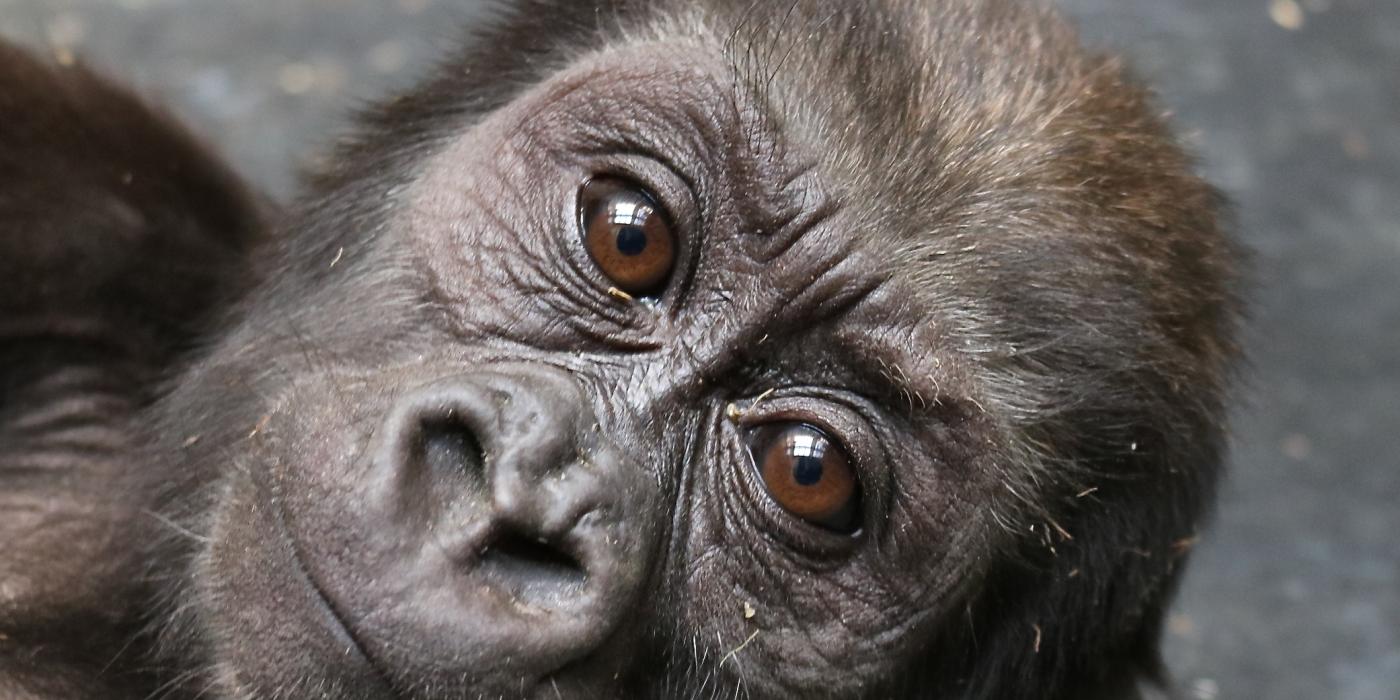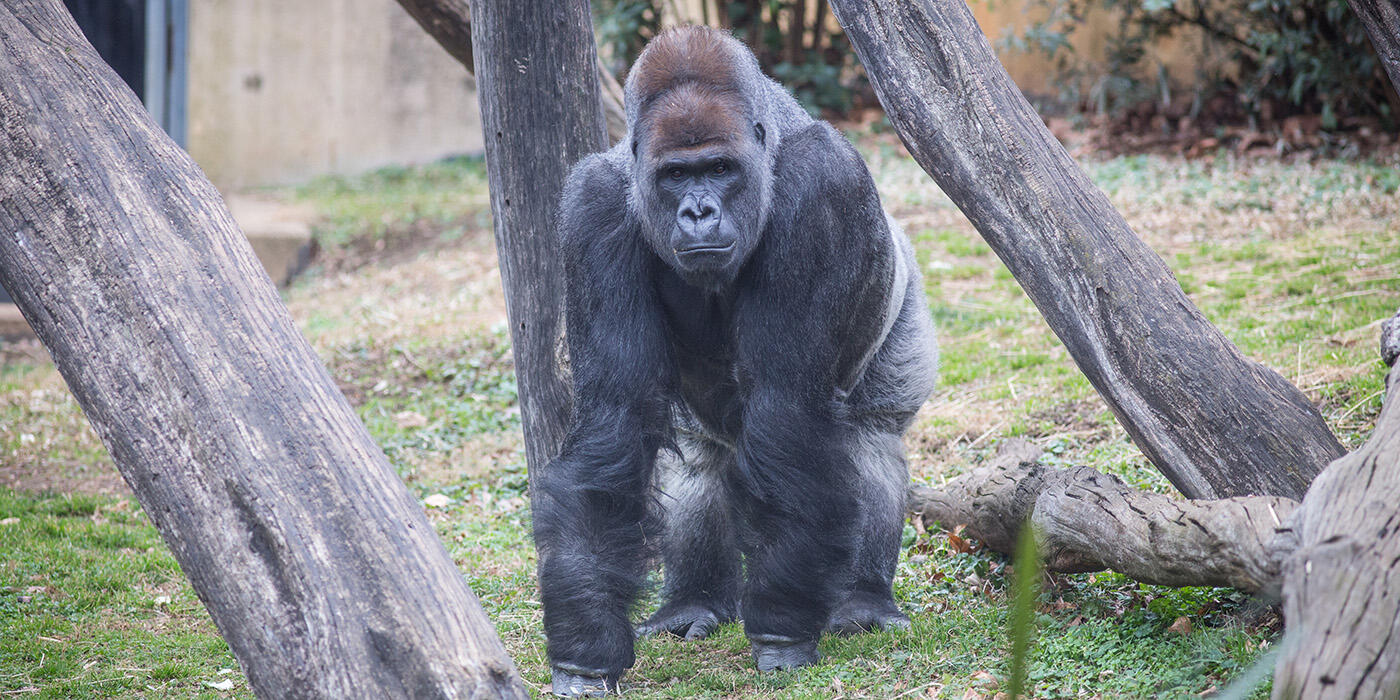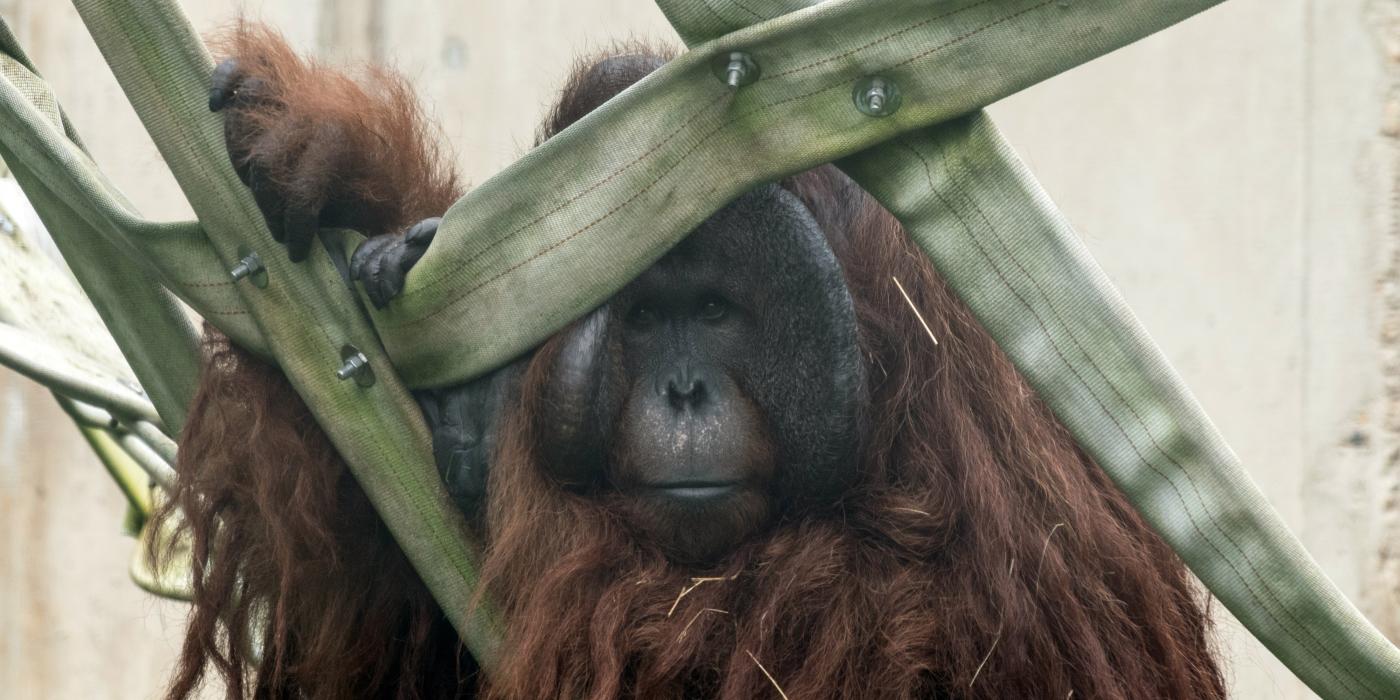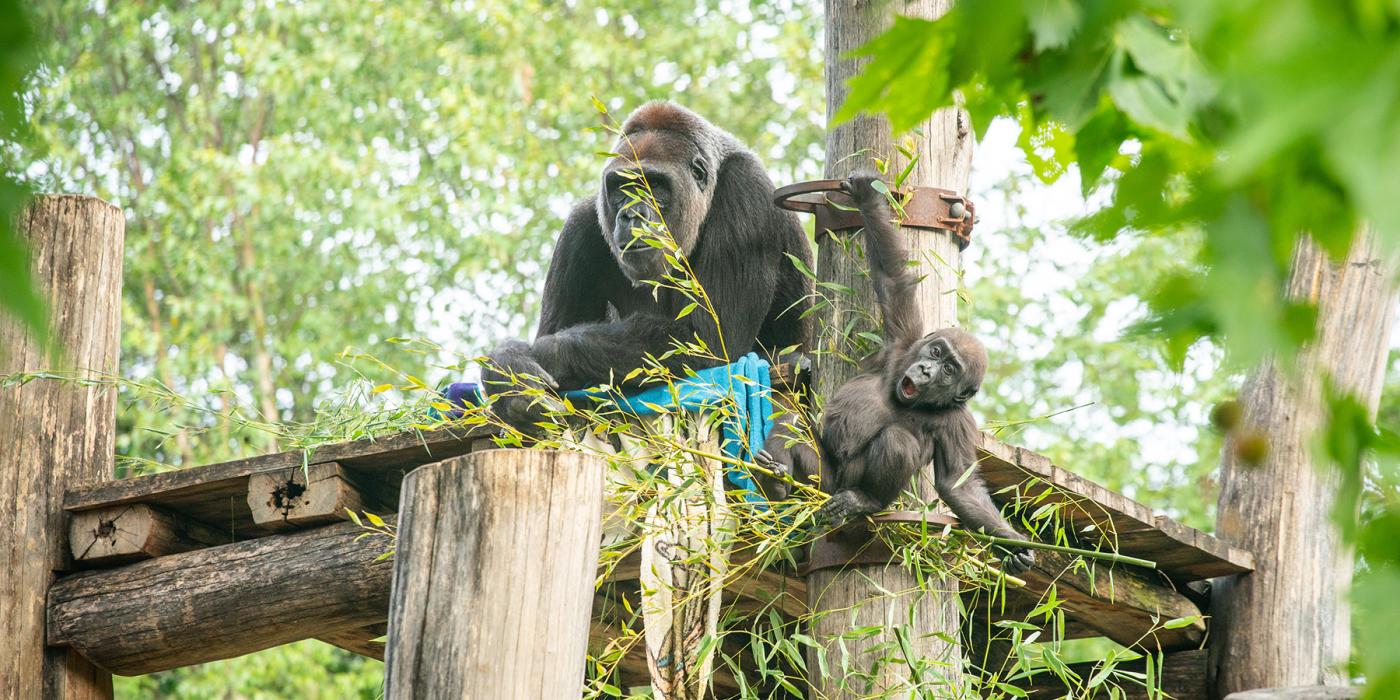#GorillaStory: Moke on the Mend

Over the weekend, primate keepers noticed that the Zoo’s western lowland gorilla infant, Moke, was not placing weight on his left leg. A veterinary exam revealed that the rambunctious 9-month-old had a fractured femur. Moke is resting and recovering with his parents, Calaya and Baraka, under the close watch of the animal care team. Find out more about Moke’s treatment from primate curator Meredith Bastian and chief veterinarian Don Neiffer.
How did Moke injure his leg?
Bastian: We do not know how Moke broke his leg. Followers of our #GorillaStory updates know that Moke can be a bit of a daredevil. It is entirely possible that he landed the wrong way during one of his many jumps, but because no one witnessed the incident, we can only speculate about what may have happened. Around 2 p.m. on Sunday, Jan. 27, keepers first noticed that Moke was favoring—or not placing weight on—his left leg.
What prompted you to examine Moke?
Bastian: The primate team kept a close eye on Moke Sunday afternoon and all day Monday, Jan. 28. Although it was clear that there was something wrong with his leg, Moke did not appear to be in any obvious discomfort. He was nursing and eating, walking, moving quickly, climbing the mesh and even playing with his mother (Calaya), father (Baraka) and Kibibi just as he normally would. The other gorillas did not change their behavior toward him at all. The only clue that something was wrong was that he was favoring his leg.
After consulting with our veterinary team, we decided to do an exam to try to determine the cause of Moke’s limp. To examine Moke, we had to anesthetize Calaya as well. Without anesthetizing Calaya, it would not have been safe for the veterinary or primate staff to examine Moke. This is a testament to her strong maternal instinct and bond with him.
What did Moke’s exam reveal?
Neiffer: During the exam Jan. 29, we noted a little bit of swelling over Moke’s lower left thigh. The only abnormality we saw on the radiographs was a single, complete fracture through the distal quarter of his left femur. The fracture is not significantly displaced—the two pieces are not separated from one another. The other good news is that the break is not through the growth plate—a good indicator that this injury will not affect his growth.
While Moke was anesthetized, we had an opportunity to do our first complete physical exam on him. Apart from the fracture in his leg, Moke is very healthy. We did bloodwork to make sure his organs were functioning properly (they are), and his mineral levels—particularly calcium and phosphorus, which are part of bone development—are normal. His muscle mass and bone density also look good.
While Calaya was anesthetized, we took the opportunity to do her routine exam as well. She is in very good body condition. She received vaccinations and a routine abdominal ultrasound, and we collected blood for banking and diagnostic purposes. The primate team was able to express a small milk sample from Calaya, which was sent to our Department of Nutrition Sciences to be part of our milk nutrient study.
How often will the veterinary team check up on Moke?
Neiffer: For the most part, the primate team will be monitoring Moke’s behavior and will reach out to the veterinary team if anything concerns them. Keepers have a very positive and trusting relationship with Calaya, so veterinarians rely heavily on their observations. The gorillas get suspicious when the vets arrive in the building. The keepers provide us with great progress reports, so we will be keeping tabs on Moke—just from a distance.
What if Moke’s behavior changes?
Neiffer: At the moment, he is not exhibiting any behaviors that would indicate he is in pain. That may be because the fracture is not displaced.
Our primate team is on the lookout for evidence of pain as well as physical changes—swelling increasing near the fracture site or in his foot, if his toes are cold to the touch and/or if he is unable to clench his toes. Those are all indications that we would need to evaluate him as soon as possible. At that point, we would likely need to do a surgical intervention.
How long will it take for his bone to heal?
Neiffer: The next seven to 10 days is a critical period. Assuming Moke limits his movement and there is no further trauma to his leg, he will form a callus that will help remodel the bone within that 10-day window.
Any time you fracture a bone, there is a possibility it could re-fracture. The good thing is that he is a young, growing animal. Whereas an adult might be out of commission for six-to-eight weeks with a similar fracture, 30 days is probably more than enough time for a healthy gorilla infant to heal. At that time, the fracture site should have about 80 percent of the stability it had before the break, and it will fully resolve in a couple months’ time.
Related Species:



